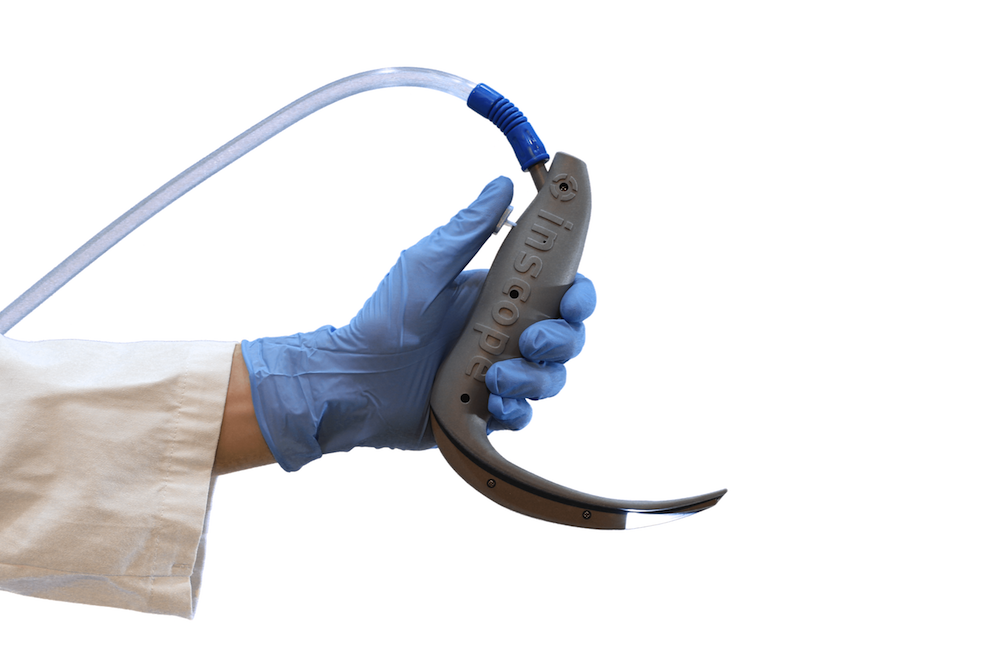New Device Clears the Air for ER Docs
 In a recent round of studies
In a recent round of studies
Subscriber Benefit
As a subscriber you can listen to articles at work, in the car, or while you work out. Subscribe NowSeconds matter in the emergency room, and it was having those critical seconds slip away that sparked the idea for a new medical device to help trauma patients breathe. Dr. Mary Nan Mallory, an ER physician at the University of Louisville Hospital, was trying to intubate a patient with life-threatening injuries when she realized she needed more than conventional equipment to get her patient breathing quickly again. Her idea sparked the development of Jeffersonville-based Inscope Medical Solutions, a device company that recently crossed the river to Indiana to launch its first product.
The Inscope Direct is currently being used in four hospitals before a nationwide launch this fall. The device helps physicians intubate trauma patients, a procedure in which a breathing tube is inserted through the mouth into the trachea to help the patient breathe effectively.
Physicians typically use a device called a laryngoscope for intubation; the instrument allows doctors to see the vocal cords, which is the “target” that the breathing tube needs to be passed through. Laryngoscopes are increasingly equipped with cameras, but when Dr. Mallory was treating the car accident patient, blood and vomit in the throat were blocking the camera’s view—a common struggle in trauma cases.
Dr. Mallory reached for another piece of equipment to suction the throat area, which created a “clumsy juggle” among three instruments: the laryngoscope, suction device and breathing tube. Inscope Chief Executive Officer and co-founder Maggie Galloway says it sparked Dr. Mallory’s idea to combine the laryngoscope and suction devices into a single device.
“[The Inscope Direct] integrates suction directly into the laryngoscope,” says Galloway. “[The physician] can just clear the airway as he or she is entering with the laryngoscope, then their other hand can focus on the critical task of passing the breathing tube through the vocal cords.”
The Inscope Direct is also a single-use, disposable device, eliminating the risk of cross-contamination. In a recent round of studies, Galloway says the device reduced the time of intubation by 45 percent. The startup is leading the “soft launch” of the Inscope Direct, and says it will be available nationwide in the fall.
Increasing demand for laryngoscopes to be equipped with cameras led to the development of its second device: the Inscope Video, which is also disposable. It’s identical to the Inscope Direct, but includes a camera; the startup says camera-assisted laryngoscopes are used in about 30 percent of cases, with the number growing rapidly.
However, Galloway says standard equipment for video laryngoscopies—including a monitor and camera system—costs up to $25,000. Inscope realized it could provide the same camera-assisted laryngoscopy experience using wireless video and technology similar to what’s on a smartphone.
“With a direct Wi-Fi connection, we can stream the procedure onto a tablet,” says Galloway. “With a $100 price point, it makes that technology affordable to have in every ambulance, next to every ER bed, on every crash cart and in every OR (operating room) around the world.”
The startup is in the final development stages for the Inscope Video, which will be manufactured at Jeffersonville-based Key Electronics, and expects to launch the product in 2018.
All three co-founders—Dr. Mallory, Galloway and Adam Casson, an engineer—were earning their MBAs in entrepreneurship at the University of Louisville when the idea for Inscope began taking shape. Founded in 2014 in Louisville, the company moved to Indiana in late 2016.
“We have great connections in Louisville, but we found the life sciences community in Indiana to be much stronger than in Kentucky,” says Galloway. “[Moving to Indiana] was a win-win situation. We were able to still be part of the startup ecosystem in Louisville that has been so great to us from the beginning, but we also gained this whole new network and ecosystem in Indiana by strategically locating ourselves in southern Indiana.”
Indianapolis-based venture development organization Elevate Ventures also provided some funding for the startup, and Inscope recently took top prize at the inX3 pitch competition in Indianapolis.
“The Indiana piece, in particular, has been really positive,” says Galloway. “The most exciting thing is finally seeing our device in clinical use after all of this time. As we start to gain momentum this fall, that will be the most rewarding part.”
Galloway says Inscope moved to Indiana due to the state’s strong life sciences ecosystem.
Galloway says the Inscope devices help doctors in “very, very high-stress” trauma cases.
